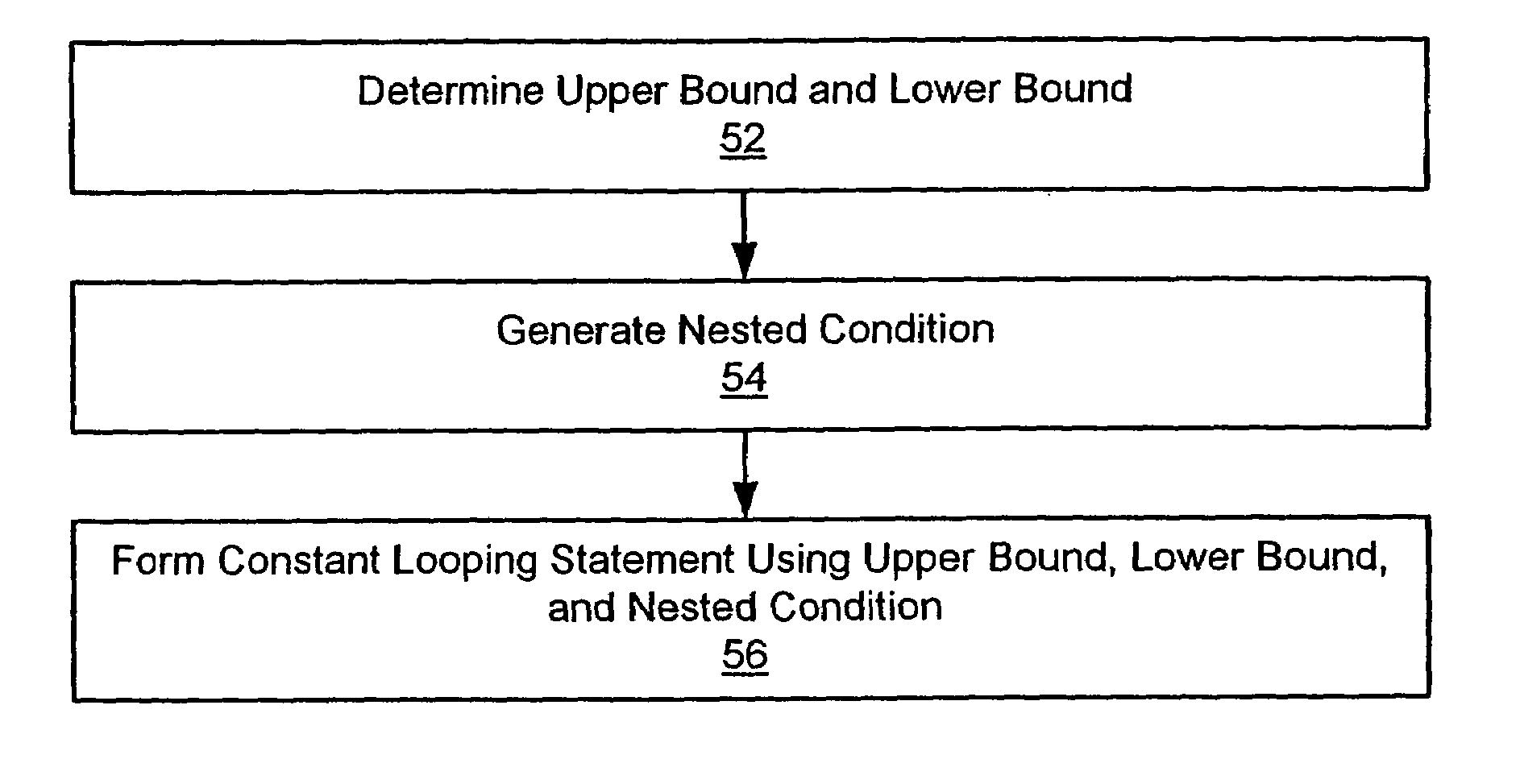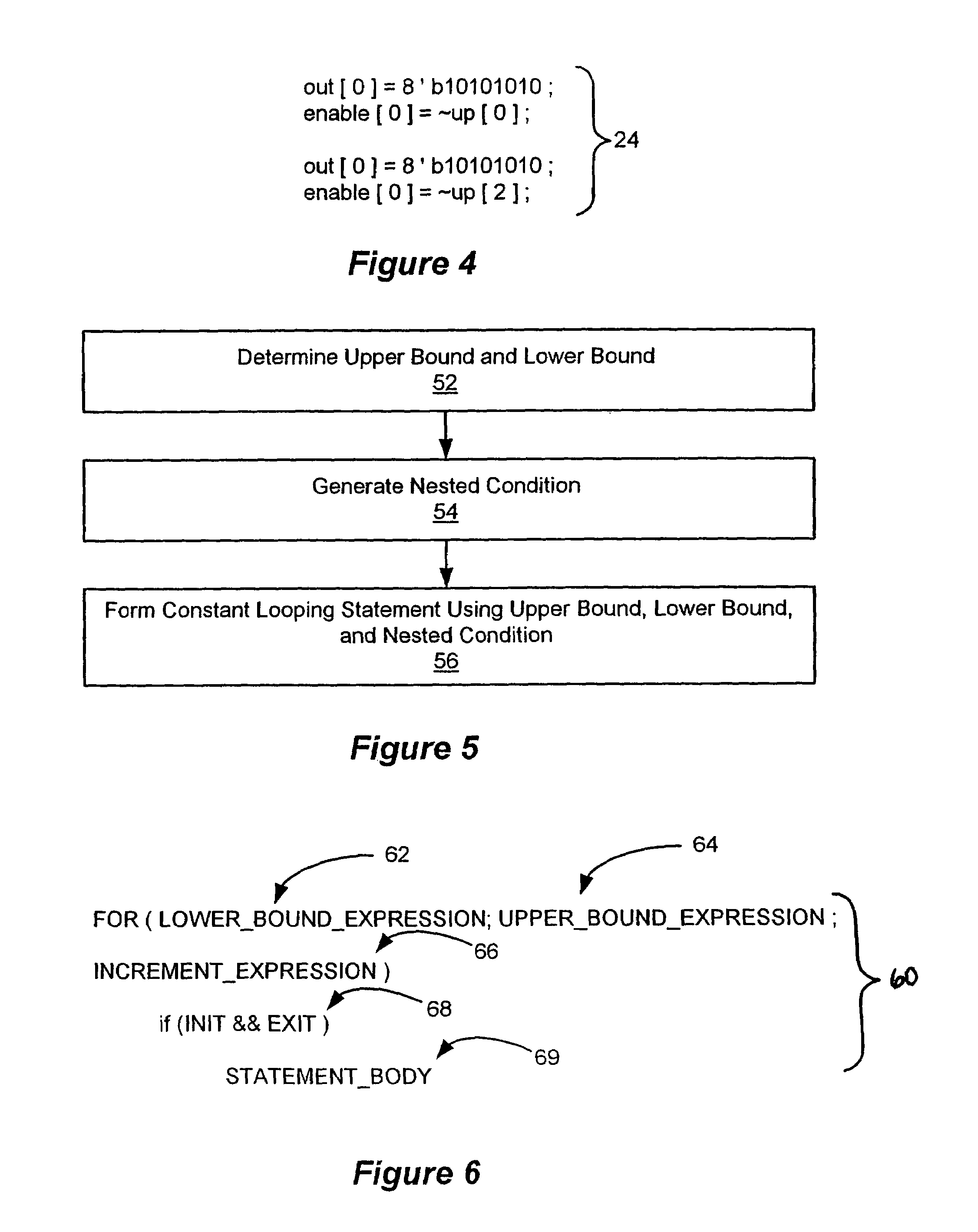Method of transforming variable loops into constant loops
- Summary
- Abstract
- Description
- Claims
- Application Information
AI Technical Summary
Benefits of technology
Problems solved by technology
Method used
Image
Examples
Embodiment Construction
[0026]As shown in FIG. 5, in an illustrative embodiment, a series of steps are performed in order to process a variable looping statement such that the variable looping statement is transformed into a constant looping statement on which loop unrolling may be performed. The steps illustrated in FIG. 5 may be embodied within any specific type of computer program stored on a computer readable medium, and capable of execution on one or more processors within a computer system. For example, an executable program operable to perform the steps shown in FIG. 5 may be stored within a computer memory or program storage device that is communicably coupled to one or more processors operable to execute the computer program.
[0027]At step 52, the disclosed system determines an upper bound and a lower bound to be used to define a range of values for a loop index in a generated constant looping statement. The disclosed system determines the upper bound and lower bound at step 52 such that the range ...
PUM
 Login to View More
Login to View More Abstract
Description
Claims
Application Information
 Login to View More
Login to View More - R&D
- Intellectual Property
- Life Sciences
- Materials
- Tech Scout
- Unparalleled Data Quality
- Higher Quality Content
- 60% Fewer Hallucinations
Browse by: Latest US Patents, China's latest patents, Technical Efficacy Thesaurus, Application Domain, Technology Topic, Popular Technical Reports.
© 2025 PatSnap. All rights reserved.Legal|Privacy policy|Modern Slavery Act Transparency Statement|Sitemap|About US| Contact US: help@patsnap.com



